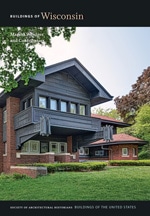
The Free Congregation of Sauk County (Freie Gemeinde von Sauk County) is North America’s most enduring of the Union of Free German Congregations, a group of humanists who immigrated here from Germany in the 1840s and 1850s. Eduard Schroeter, the national leader of the movement, served the Sauk City congregation as speaker from 1853 until his death in 1887. While the Freethinkers eschewed designation as a religious denomination, they organized as a congregation to meet their collective needs. In their incorporation papers, they pledged themselves to the intellectual and moral independence of men and women and issued a ringing proclamation of anticlericalism. In this hall, German culture—its language, literature, music, and food—flourished in public lectures, concerts, and celebrations, and thus the building helped to maintain a close-knit community. In 1937, the congregation adopted English as its language, and today it is affiliated with the Unitarian Fellowship.
Clas, son of one of the congregation’s founders, designed the front-gabled, clapboard building, and William Dresen built it. Though plain, the design incorporates attractive details, including a paneled frieze, interrupted at the center of the facade by a trio of tall windows and fish-scale shingles in the roof and dormer gables. About 1918, the original shed-roof porch was replaced by a more elaborate one with turned columns, spindle friezes and balustrades, and scroll-sawn cut brackets. Inside, the main hall is ornate yet restrained. The two-story space has a coved ceiling, made more dramatic by an elaborate floral pattern stenciled in tan, rose, and blue, colors that are repeated in the stained glass in the top sash of the windows and in the ceiling panels. Spanning the south end of the hall, one of the arched wooden ceiling ribs frames an elevated gallery.

